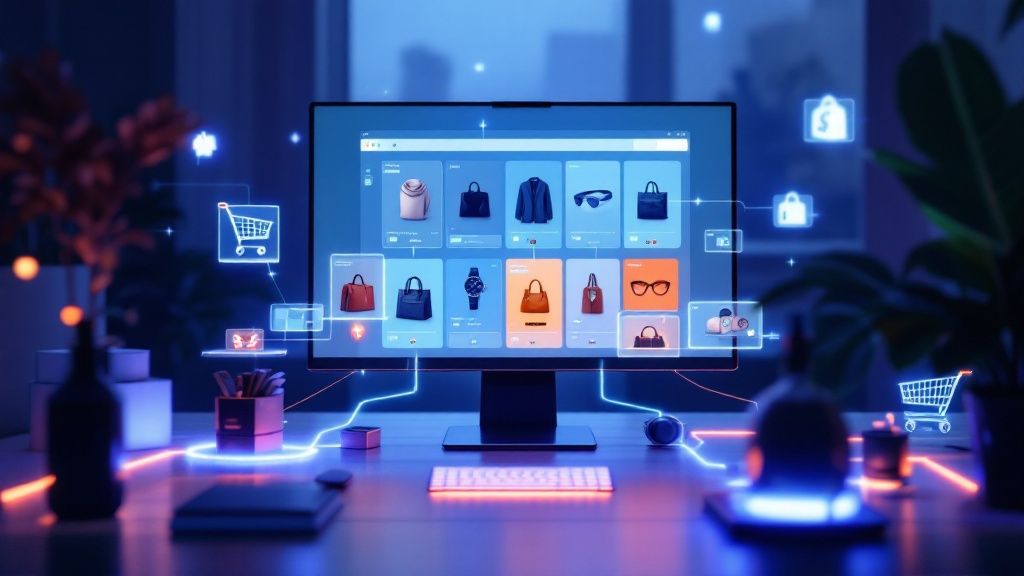Shopify Abandoned Cart Email Automation: Recover Lost Sales
April 27, 2025

The Psychology Behind Abandoned Carts (And Why It Matters)
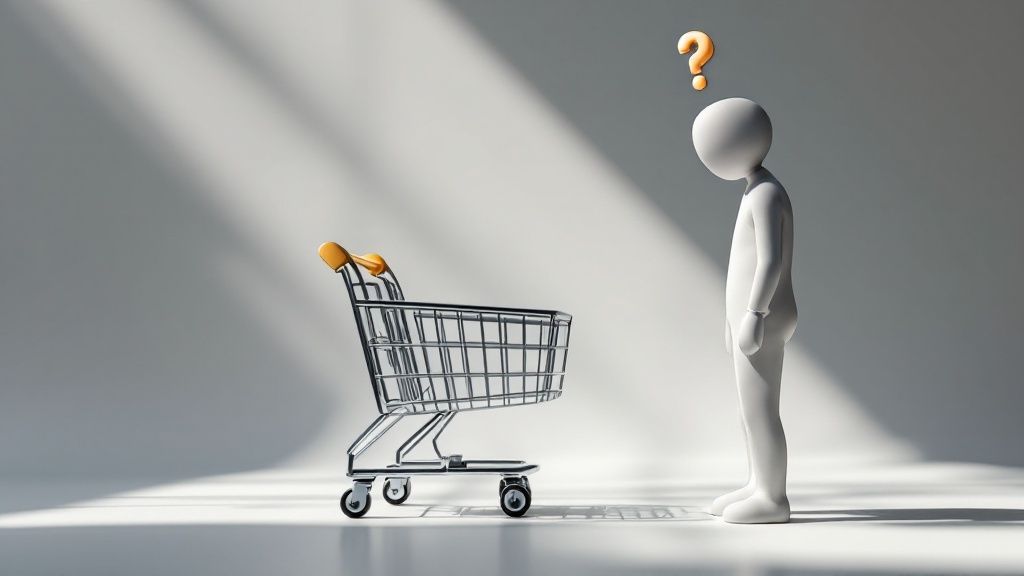
Every abandoned cart tells a story. It represents a potential customer who was interested in a purchase but, for some reason, didn't complete it. Understanding why customers abandon their carts is essential for recovering lost revenue and fostering better customer relationships.
Why Shoppers Abandon Their Carts
Several factors contribute to cart abandonment. One common reason is unexpected costs like high shipping fees or taxes added at checkout. This can erode trust and discourage shoppers from completing the purchase.
Sometimes, technical issues with the website, a complex checkout process, or a lack of preferred payment methods can deter customers. Furthermore, many online shoppers use their carts as virtual wishlists, adding items for later without intending to purchase them immediately.
This “window shopping” behavior is a normal part of online browsing and contributes significantly to abandoned carts.
Turning Hesitation into Opportunity with Shopify Abandoned Cart Email Automation
Shopify abandoned cart email automation plays a crucial role in recovering lost sales. These automated emails act as gentle reminders, re-engaging potential customers and addressing any hesitations they might have.
A well-crafted abandoned cart email can remind shoppers about the items they left behind, offer incentives like free shipping or discounts, and provide reassurance about security and return policies. For additional strategies on reducing cart abandonment, check out this helpful resource: How to master reducing cart abandonment.
For instance, a customer might abandon their cart due to unexpected shipping costs. An automated email offering free shipping can be the incentive they need to complete the purchase. This demonstrates how understanding cart abandonment psychology can inform an effective recovery strategy.
These emails are significantly more effective than standard marketing emails. The effectiveness of abandoned cart email automation in Shopify hinges on metrics like open rate, which is typically around 45%. This is considerably higher than typical marketing email open rates, indicating customer engagement with their unfinished purchases. While the recovery rate (the percentage of returned customers who complete a purchase) is harder to track directly in Shopify, often requiring manual analysis, a well-timed email sequence can significantly impact conversions. For more detailed statistics, visit: CheckoutLinks Blog.
The Power of Personalized Communication
Personalized abandoned cart emails can further boost conversion rates. Addressing the customer by name and displaying the specific items left in their cart creates a personal connection.
This reminds them of their initial interest and reinforces the value of the products they were considering. Including personalized product recommendations based on their browsing history can further entice them to return.
This personalized approach, coupled with a direct link back to their cart, can effectively convert a lost sale into a loyal customer.
Building Your First Recovery Sequence That Actually Works
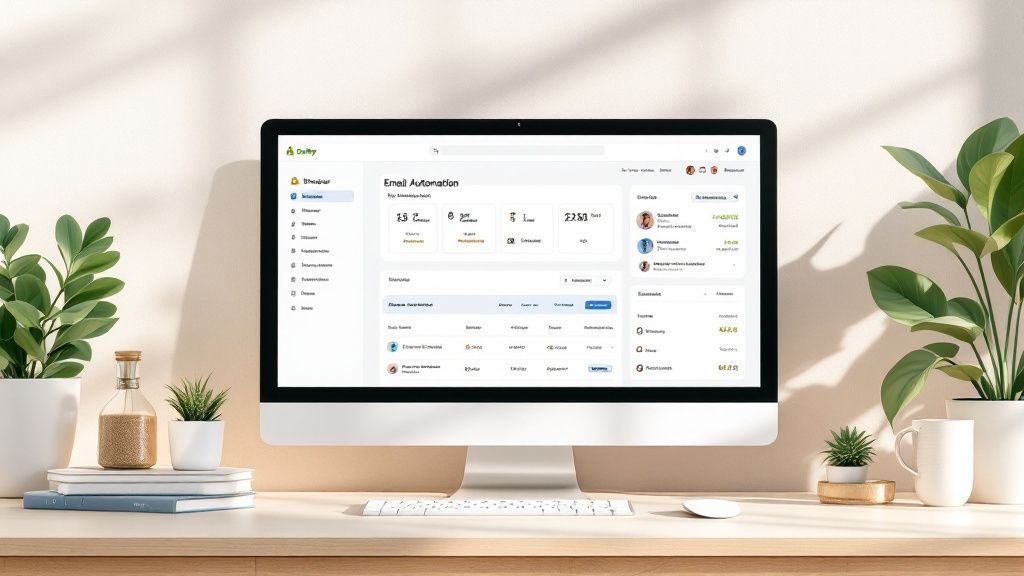
Setting up abandoned cart email automation in Shopify can seem like a big task, but it's vital for recovering lost sales. Think of it as a safety net for your sales process. This guide will show you how to build a recovery sequence that works behind the scenes, encouraging customers to complete their purchases.
Accessing Shopify’s Automation Settings
Your first step is finding Shopify's automation features. Go to the Marketing > Automations section in your Shopify admin. Here, you'll find everything you need to create your abandoned cart email sequence. It's a simple process, similar to setting up an out-of-office reply. You define the trigger (abandoned cart) and the action (email sequence), and Shopify handles the rest. This automation forms the core of your recovery strategy.
Shopify lets merchants create and manage abandoned checkout emails directly through this 'Marketing > Automations' section. By enabling this, emails are automatically sent to customers who abandon their carts, usually with a link to easily return to checkout. While these built-in features offer basic automation, using third-party apps can provide advanced features like personalized, behavior-triggered emails. Learn more: Learn more about abandoned cart email automation.
Timing Is Everything: Setting the Right Delays
When you send your recovery emails is critical. Sending one too soon can seem pushy, while waiting too long might mean losing the customer's interest. A common approach is a three-email sequence.
- Email 1: Sent one hour after abandonment, serving as a gentle reminder.
- Email 2: Sent 24 hours later, potentially offering a small incentive like free shipping.
- Email 3: Sent after 72 hours, possibly including a larger discount or creating a sense of urgency.
This staggered approach respects the customer's time while maximizing your chances of recovering the sale.
Leveraging App Integrations for Enhanced Automation
While Shopify's built-in automations are a good foundation, adding apps like Checkout Links can boost your recovery efforts. These apps generate dynamic cart links, which pre-fill the customer's abandoned cart for a frictionless return to checkout. Clicking the link takes them right back to where they left off, ready to complete their purchase.
Checkout Links and similar apps also allow you to include personalized discount codes in the recovery email, further incentivizing the customer. This creates a smooth, personalized recovery experience.
Beyond the Basics: Building a System That Works 24/7
Setting up a solid Shopify abandoned cart email automation system creates a continuous recovery process that needs minimal upkeep. By using Shopify's tools along with strategic app integrations, you're building a system that constantly works to recover lost sales, improving your bottom line. This frees you to focus on other areas of your business, confident that your abandoned carts are being effectively managed.
Crafting Recovery Emails That People Actually Open
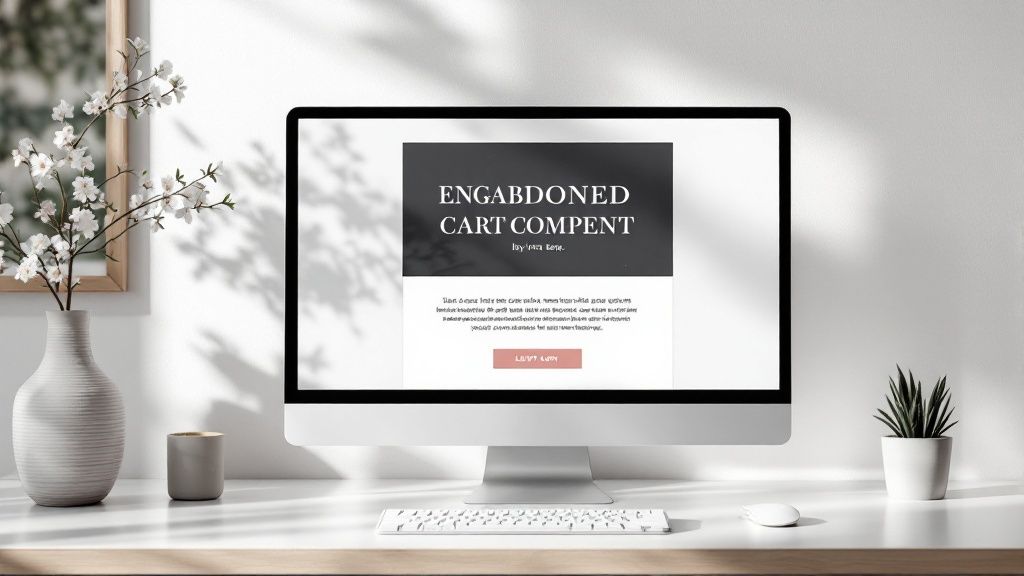
Recovering abandoned carts successfully requires more than just sending a reminder. It's about creating messages that resonate with your customer and encourage them to complete their purchase. This requires strategic thinking about every part of your Shopify abandoned cart email automation, from the subject line to the call to action.
The Power of a Compelling Subject Line
The subject line is your first impression. It's the online equivalent of a storefront window. A generic subject line often gets ignored, sending your email straight to the trash.
Aim for subject lines that are:
- Intriguing: Instead of "Your Cart is Waiting," consider "Still Thinking About It? Your [Store Name] Cart is Waiting."
- Personalized: Use the customer's name or mention a specific product they left behind.
- Benefit-Driven: Highlight free shipping, discounts, or the value of the items in their cart.
"Don't Miss Out, [Customer Name]! Your Favorite Items Are Still in Your Cart" grabs attention much better than a generic reminder.
Optimizing Email Content for Conversions
Once you have their attention, your email content needs to hold it. Start by reminding customers what they left in their cart.
Display the abandoned items clearly, using high-quality images and a direct link back to their cart. This removes friction from the recovery process. Proactively addressing potential objections is also highly effective. For instance, if shipping costs are a concern, highlight free shipping options.
Consider offering a limited-time incentive, like a discount or free gift, to encourage checkout. Be careful not to overuse discounts, as this can condition customers to abandon carts expecting a deal. Find a balance between added value and maintaining your profit margins. Learn more about this balancing act in Best practices for abandoned cart emails.
To help illustrate the key elements for effective abandoned cart emails, take a look at the table below:
This table breaks down the essential components of successful abandoned cart emails and their impact on conversion rates.
| Email Element | Purpose | Best Practices | Impact on Conversion |
|---|---|---|---|
| Subject Line | Grab attention and encourage opening the email | Personalized, intriguing, benefit-driven (e.g., free shipping, discount) | Increases open rates, a crucial first step in recovery |
| Product Display | Remind the customer of abandoned items | High-quality images, clear product names and prices, direct link back to cart | Reduces friction in the purchase process |
| Incentive (Optional) | Nudge customers towards completing the purchase | Limited-time discount, free gift with purchase, free shipping | Can significantly increase conversion rates, but use strategically |
| Call to Action | Guide the customer to the checkout | Clear, concise, and action-oriented button (e.g., "Complete My Purchase") | Drives conversions by providing a clear next step |
| Personalization | Create a connection with the customer | Use customer's name, mention abandoned products | Improves engagement and reinforces customer value |
As this table demonstrates, each element plays a vital role in enticing customers to return and complete their purchase.
The Art of the Call-to-Action
Your call-to-action (CTA) needs to be clear, concise, and compelling. "Complete My Purchase" or "Get My Items Now" is more effective than a generic "Checkout Now."
The CTA button should be visually prominent and easy to locate on both desktop and mobile. A well-designed CTA is the final nudge towards checkout, completing the cycle started by your Shopify abandoned cart email automation.
Personalization Without Being Intrusive
Personalization can significantly boost conversions. However, it’s important to strike a balance. Using the customer’s name and showing abandoned items is usually welcome. But avoid excessive personalization that could feel intrusive.
Focus on helpful reminders and relevant information. Don't bombard customers with overly specific details about their browsing history. This balanced approach ensures a positive customer experience while maximizing your chances of recovering those lost sales. Focusing on these key elements will ensure your abandoned cart emails are not just opened, but acted upon.
Advanced Recovery Tactics Beyond Basic Reminders
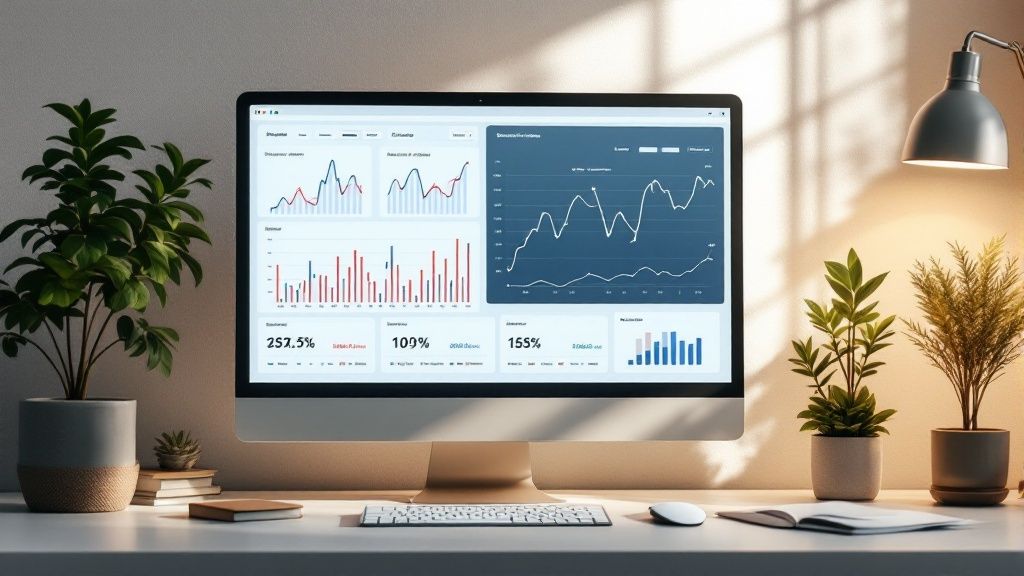
While basic abandoned cart reminders are a good starting point, maximizing recovered revenue requires a more strategic approach. This means going beyond generic emails and implementing advanced Shopify abandoned cart email automation. This focuses on personalization and a more engaging customer experience.
Segmenting Your Audience for Targeted Messaging
Generic email blasts rarely yield optimal results. Segmenting your audience based on behavior and demographics allows for more effective, targeted messaging. This tailored approach speaks directly to individual customer needs and motivations.
For example, first-time visitors abandoning a cart might need information about security and shipping. Returning customers, however, may respond better to personalized product recommendations or loyalty rewards.
Other useful segmentation criteria include:
- Browsing History: Target customers based on previously viewed products or categories.
- Cart Value: Offer incentives like free shipping or percentage discounts for high-value carts.
- Customer Lifetime Value: Reward your most valuable customers with exclusive offers and early access to sales.
By personalizing messaging for each segment, you significantly improve the chances of recovering a sale.
Implementing Progressive Discount Ladders
Discounts are effective incentives, but constantly offering deep discounts can impact profitability. A progressive discount ladder offers a tiered approach, increasing the discount over time.
The first email could be a gentle reminder. The second might offer free shipping. A third email could introduce a small discount. A final email might offer a larger discount or a free gift if the cart remains abandoned.
This strategy encourages quicker purchases while preserving profit margins.
Boosting AOV with Product Recommendations
Integrating product recommendation algorithms into abandoned cart emails can significantly boost your average order value (AOV). These algorithms analyze browsing history and suggest related products.
For example, if a customer abandons a camera, the email could recommend lenses, tripods, or memory cards. This not only recovers the initial sale but encourages additional purchases. Tools like Checkout Links allow for dynamic cart links with pre-applied discounts and custom landing pages. This seamless experience simplifies the purchase process, driving conversions.
Optimizing Timing Based on Customer Behavior
Analyzing customer data provides valuable insights into the optimal timing for your email sequence. Instead of using standard timeframes, consider sending emails when customers are most likely to engage.
This might involve sending emails on specific days or even at specific times. Aligning your email schedule with customer behavior increases open and click-through rates, leading to more recovered sales. Integrating your abandoned cart recovery automation with your overall email marketing strategy ensures a consistent and personalized customer journey, building loyalty and encouraging repeat business.
Measuring What Actually Matters in Cart Recovery
Going beyond simple metrics is essential to truly grasp the effectiveness of your abandoned cart recovery strategy. This means concentrating on data that directly reflects the success of your Shopify abandoned cart email automation.
Identifying Key Performance Indicators (KPIs)
While open rates and click-through rates offer some initial insights, they don't provide a complete picture. Recovered revenue, the actual dollar amount generated by your abandoned cart emails, is the most crucial metric.
This requires precise tracking and attribution within both Shopify and Google Analytics. Configuring your tracking correctly allows you to directly connect recovered sales to your automated emails, providing a clear view of your ROI.
Benchmarking for Success With Shopify Abandoned Cart Email Automation
Industry benchmarks help you evaluate your Shopify abandoned cart email automation performance. The average abandoned cart recovery rate is around 3.33%. However, achieving higher performance (5-10%) is possible with a well-optimized strategy.
Benchmarks can vary based on your industry. Luxury goods stores may have lower recovery rates, while essential item stores might see higher numbers. Comparing your performance to similar businesses in your niche is key.
To help you understand what to aim for, let's take a look at some key metrics. The following table outlines industry averages, good performance levels, and what constitutes excellent performance for abandoned cart emails, along with tips for improvement:
| Metric | Industry Average | Good Performance | Excellent Performance | How to Improve |
|---|---|---|---|---|
| Open Rate | 45% | 50-60% | 60%+ | Compelling subject lines, personalization |
| Click-Through Rate (CTR) | 2-5% | 6-8% | 8%+ | Clear call to action, enticing offers |
| Recovery Rate | ~3.33% | 5-8% | 10%+ | Optimized email sequence, targeted discounts |
| Revenue Per Recipient | $3.65 | $5-$10 | $10+ | Personalized recommendations, upselling/cross-selling |
This table provides a starting point for evaluating your performance and highlighting potential areas for improvement within your email campaigns.
Continuous Improvement Through Testing
A testing framework is crucial for ongoing optimization. This involves A/B testing various elements of your automated emails:
-
Subject lines: Experiment with different phrasing, personalization, and emojis.
-
Email content: Try various messages, product displays, and incentives.
-
Call to action: Test different button text and placement within the email.
-
Timing: Adjust the time between emails in your sequence.
Analyzing test results reveals what resonates best with your audience, allowing you to continually refine your strategy and adapt to changing customer behavior.
Identifying Leverage Points in the Recovery Funnel
Small adjustments to critical points in your recovery funnel can have a significant impact. For example, a clearer call to action can significantly boost conversions.
A small incentive, like free shipping, in the first email can drastically reduce cart abandonment. Understanding these leverage points allows you to prioritize optimization efforts for maximum ROI. Apps like Checkout Links offer advanced features for personalized discount codes and dynamic cart links, streamlining the recovery process and boosting conversion rates. By consistently tracking these metrics and testing different approaches, you can build a robust and adaptable Shopify abandoned cart email automation strategy that maximizes recovered revenue and strengthens customer relationships.
Avoiding Costly Mistakes in Your Recovery Strategy
Even the most well-planned Shopify abandoned cart email automation strategies can miss the mark if not executed properly. Learning from others' mistakes can be a valuable way to save time and money. Let’s explore some common pitfalls and how to steer clear of them.
The Discounting Dilemma: Finding the Right Balance
While discounts can be tempting for customers to finalize a purchase, over-discounting can inadvertently train them to abandon carts expecting a price drop. This ultimately hurts your profit margins and devalues your products.
Instead of constant discounts, focus on highlighting the value of your products and the unique experience your brand provides. Consider using discounts strategically, perhaps for first-time customers or for carts exceeding a specific value. This targeted approach maximizes impact without conditioning customers to expect constant price reductions.
Timing is Key: Respecting the Customer’s Space
Poorly timed emails can irritate customers and negatively affect your brand. Bombarding customers with emails immediately after cart abandonment can feel intrusive. Conversely, waiting too long can cause them to lose interest entirely.
A three-email sequence often works best: the first within an hour, the second within 24 hours, and the third within 72 hours. Each email should serve a unique purpose, from a gentle nudge to a compelling offer. Test various timings to determine what resonates best with your audience, ensuring you remain top-of-mind without being overwhelming.
The Perils of Generic Messaging: Connecting With Your Audience
Generic abandoned cart emails often land in spam folders. Customers easily recognize templated messages, which fail to resonate and feel impersonal.
Instead, personalize your emails. Use the customer’s name, show the abandoned items with high-quality images, and tailor the content based on their browsing history. This personalization demonstrates that you value their business and understand their needs.
Technical Troubles: Ensuring a Seamless Experience
Technical problems can disrupt your entire recovery strategy. A broken link to the abandoned cart or a cumbersome checkout process can lead to frustration and lost sales. Routinely test your emails and checkout flow across various devices to ensure seamless functionality. This minimizes friction and allows customers to focus on completing their purchases.
Compliance Considerations: Staying on the Right Side of the Law
Adhering to email marketing regulations is essential. Non-compliance with regulations like GDPR can lead to significant penalties and reputational damage. Always include an unsubscribe option in your emails and ensure you collect customer data ethically and transparently. This safeguards your business and fosters trust with your customers.
By addressing these common pitfalls, you can create a Shopify abandoned cart email automation strategy that is both effective and respectful. This ultimately leads to increased recovered revenue and strengthened customer relationships.
Boost your Shopify store’s revenue recovery with personalized, dynamic cart links and targeted email campaigns! Start your free trial with Checkout Links today and discover how easy it is to convert abandoned carts into completed purchases.
 Checkout Links
Checkout Links


